According to the Guinness Book of World Records, the oldest recorded living goldfish came from humble beginnings.
Won by seven-year-old Peter Hand at a fairground stall in 1956 (yes, one of those “goldfish in a bag” prizes), Tish the goldfish went on to live a record 43 years!

How long can you expect your goldfish to live? That question is complicated.
If you have done any looking into the variety of goldfish types out there, you will find an equally wide variation in potential lifespans.
The hardiest types can live from 15 to 20 years or longer with good care.
The more delicate, intricately bred variations may only live for five to ten years.
Although your goldfish may not break any world records for longevity, there are many things you can do to ensure that your fish has the best chance to live their longest, healthiest life.
In this article
What is a Goldfish’s Maximum Lifespan?
It is incredible how many types of goldfish (Carassius auratus) one can find and equally incredible how widely their lifespans can vary.
All goldfish are descended from the ultra-hardy carp, which has an impressive lifespan of 25 to 50 years.
Common Goldfish

Breeding practices have shortened that lifespan for goldfish. The hardiest variety, the common goldfish, can be expected to live from 15 to 20 years.
Fancy Goldfish
Generations of breeding have led to the unique, fancy goldfish variations that are popular today. Fancy goldfish typically have a much shorter lifespan of between five to 10 years.
The following are some popular varieties of goldfish and their expected lifespans:
1. Ryukin
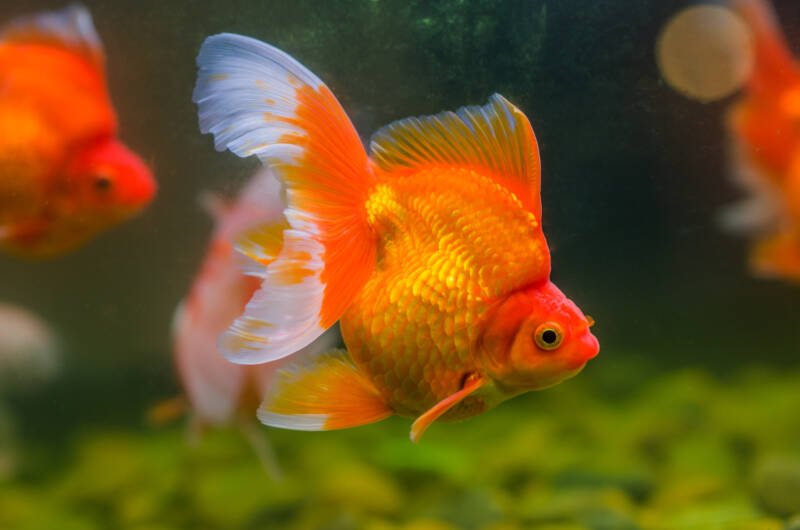
The ryukin goldfish is loved for its plump, egg-shaped body and flowing double tail fin.
The ryukin is one of the easier to care for fancy goldfish and can live from 10 to 15 years.
2. Ranchu
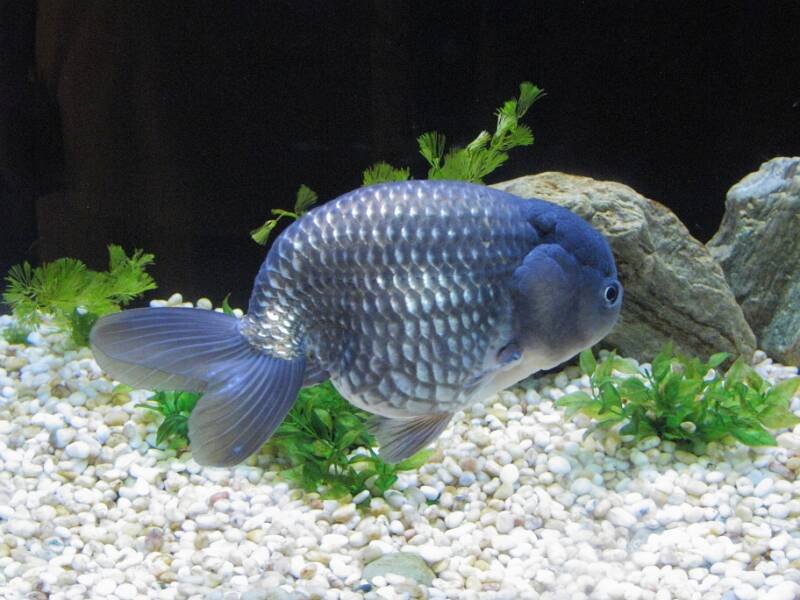
Ranchu goldfish have a distinctly hunched back, a tucked double tail, and a helmet of bulbous growths on their heads.
These fish live anywhere from eight to 15 years with ideal care.
Their limited genetic range can result in conditions that reduce their lifespan.
3. Shubunkin
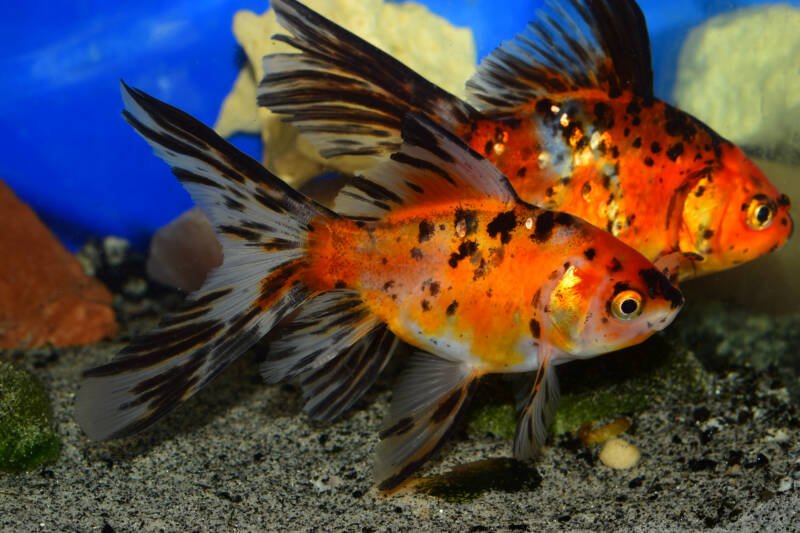
The shubunkin goldfish is a lively, active fish with lovely calico coloration.
These fish live an average of 10 to 15 years; however, that lifespan can be extended with excellent care.
4. Oranda
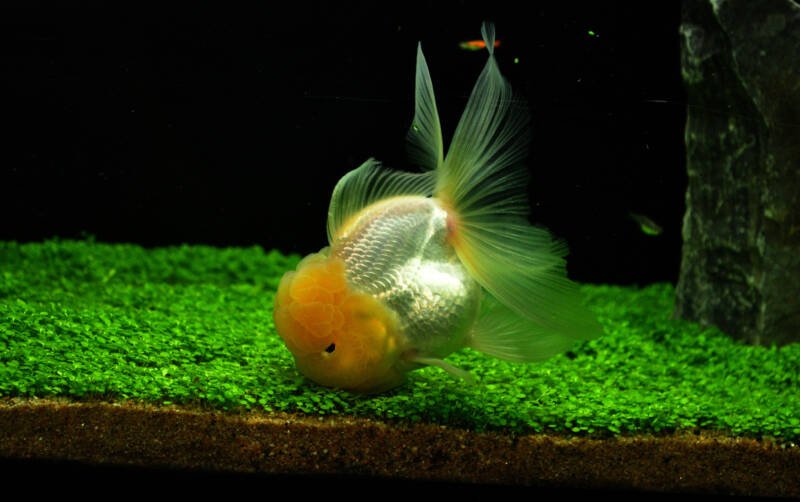
Oranda goldfish have rounded bodies with either matte or metallic scales.
They are distinguished by the prominent, fleshy wen on their foreheads. They live from 10 to 15 years.
5. Comet

Closely related to the common goldfish, the comet goldfish sports a flowing, single tail fin and a sleek body frame.
These larger fish are great for outdoor ponds and live from five to 15 years.
How Can You Maximize a Goldfish’s Life Expectancy?
The wonderful thing about goldfish is their ability to live as an indoor or outdoor fish. They can happily live either in a tank or outside in a pond.
Although no plan is perfect, the best way to maximize your goldfish’s life expectancy is by providing proper care.
This care includes a well-planned tank or pond, ideal water parameters, and the best foods.
Tank Size
Although typically thought of in this setup, goldfish cannot thrive if they are kept in a bowl. These fish need adequate space.
Keeping your goldfish in a small tank will increase their stress levels, leaving them open to diseases and infection, which can in turn reduce their lifespan.
In addition, cramped conditions will limit their growth and diminish their overall health.
The minimum tank or pond size will depend on the type of goldfish you have; however, the bigger the tank, the happier the fish.
The following will impact the size you will need:
Adult Size of the Goldfish

When selecting a tank, it is important to consider the ultimate adult size of the fish.
Goldfish varieties that are around six to eight inches (15-20 cm) in adult length can be kept as a single specimen in a 20-gallon tank (80 l), but that is an absolute minimum.
Larger varieties, such as the common goldfish, can grow to over a foot (30.5 cm) in length, necessitating a much larger tank.
Activity Levels
Remember that some goldfish need a greater amount of swimming space for their size, so research the variety and know their behaviors before deciding on a tank size.
Your tiny five-to-eight-inch fish may require a 55-gallon (200 l) tank in order to be happy.
In the case of highly active fish, like the shubunkin, a 75-gallon (280 l) tank is needed.
Stocking Number and Waste Produced
Larger tanks also help with managing the excessive waste produced by goldfish.
It may seem counterintuitive, but it is easier to maintain a stable environment with goldfish in a larger tank.
Follow suggested stocking numbers and for each additional fish, add another 10 gallons (40 l).
We suggest that you look at the recommended tank size and go slightly bigger if you can manage it.
Plants
While some types of goldfish do well with live plants in their tank, most have a reputation for rooting around, digging them up, and nibbling on them.
If you prefer live plants, consider those that are tough, floating, and can handle the cooler waters preferred by goldfish.
Marimo moss balls (Aegagropila linnaei) are an excellent choice.

These free-rolling algae balls tolerate the cooler water well and as they are not attached to the substrate, are not at risk of being uprooted by your fish.
Another great choice is hornwort. This plant can grow in a wide range of water temperatures, its foliage is not palatable to your goldfish, and it can grow as a free-floating plant.

If you add live aquatic plants to your goldfish tank, make sure to remove any dead or rotting plant debris from the water.
This material can contribute to ammonia spikes, which can be harmful to your fish.
Well-maintained plants, however, are a vital part of the tank’s nitrogen cycle and can help keep your fish healthy.
Decorations
Decorations are not necessary in a goldfish tank but can add interest.
With delicate-finned varieties, be sure to choose décor with rounded edges. Any sharp or rough edges can damage their fins, leading to fin rot and potentially shortening their lifespan through disease.
Maintain Optimal Water Quality
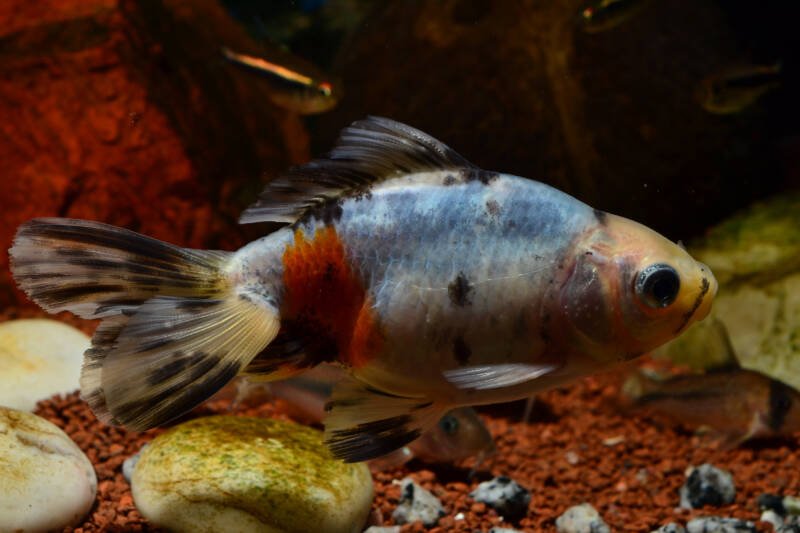
Whether your fish is in a tank or in a pond, the quality of the water in which they live is the biggest influence on a goldfish’s lifespan.
Set the Conditions and Keep Them Stable
Stability in water parameters is important when striving to keep goldfish healthy and living a long life.
Goldfish love cooler water temperatures and neutral pH levels. They tolerate soft to moderately hard water.
Strive for the following water conditions:
- Water temperature: 65 to 75°F (18 to 24°C)
- pH levels: 7.0 to 8.0 (neutral or slightly above is best)
- Hardness: 5 to 19 dGH.
Keep an eye on these conditions by regularly checking the water temperature and testing the water using a quality test kit.
Install a Filtration System
Maintain water conditions using a sturdy filtration system.
The type you select is not as important as making sure it can handle the size tank you have.
Many of the higher-end systems will have a combination of mechanical, biological, or chemical methods for cleaning the water.
A filtration system is a good idea for an outdoor pond as well. Mechanical filters can help immensely with keeping ammonia and waste material under control.
Remember that a filtration system does not mean that you can avoid regular water changes.
Perform Regular Water Changes
Water changes are vital to the overall health of your tank or pond, and ultimately, your goldfish!
Plan on changing at least 20 to 40 percent of the water every two weeks; however, this number can vary depending on the size of the tank and number of goldfish in it.
Outdoor ponds may need to be drained entirely once a year for maintenance in addition to regular partial water changes.
Use a Test Kit to Measure Water Parameters
It is vital to use a trusted water testing kit to verify water parameters such as ammonia, nitrite, and nitrate levels.
Ammonia and nitrites are toxic to goldfish and should be no higher than 0 ppm.
Nitrates are naturally occurring but should be kept below 20 ppm for the optimal health of your fish.
Monitor the Oxygen Level in the Water

It is always a good idea to check the oxygen levels as well.
The amount of dissolved oxygen in the water can lower for several reasons.
Decaying plant matter, overstocking, and warmer temperatures are all culprits.
Low oxygen levels will negatively affect your goldfish as they struggle to intake an adequate amount from the water.
To ensure a healthy oxygen/carbon dioxide gas exchange, ensure that your floating plants do not completely cover the water surface, leaving plenty of space free for gas exchange.
Promptly remove decaying plant material and tend to algae blooms that can use up the available oxygen.
Installing air bubblers or water pumps for indoor setups and waterfall features or water pumps for outdoor ponds can help maintain adequate oxygen levels.
Cycle the Tank Before Adding Fish
A natural and stable nitrogen cycle in your tank means that beneficial bacteria have established to the point where they can break down ammonia and nitrites into less harmful nitrates.
Placing your goldfish into an immature tank can shock them, so allow your tank to run for several weeks beforehand to establish a steady cycle.
Water treatments are commercially available to help establish beneficial bacteria and reduce ammonia levels.
Use a test kit to verify water parameters before adding your fish.
Feed Them Well
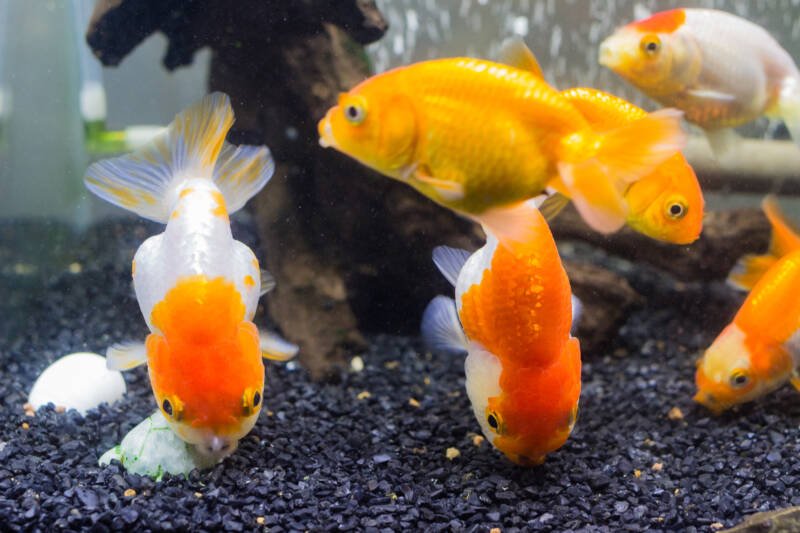
Take care when keeping goldfish, especially the fancy varieties, to feed them well.
Breeding practices for fancy goldfish can result in compacted digestive tracts, which can lead to food becoming stuck, bloating, and constipation.
An improper diet can exacerbate this condition. Variety is the key with these omnivores.
A base of high-quality flake or pellet food, combined with regular treats of high protein foods, such as brine shrimp, bloodworms, or daphnia, is ideal.
As these fish have a tendency toward constipation, do not overfeed them.
They will gladly eat everything you offer, so stick to a feeding schedule and give the amount recommended for the type of goldfish you have and their developmental stage.
Remember that goldfish are extraordinarily messy.
Remove any uneaten food and adjust the amount you give them to minimize the food left over.
Closing Thoughts
The first step in determining how long your goldfish will potentially live is to know the average lifespan for the variety you have.
Once you have this range in mind, the best way to encourage a long and healthy life for your fish is to provide the best possible care.
Proper tank size and setup, stable water conditions, and a high-quality diet will all go a long way toward keeping your goldfish healthy.
While the best laid plans are not foolproof, you can be confident that you are doing everything you can to maximize your goldfish’s longevity.
Let’s hear from our readers with older goldfish!
To what do you most attribute their long lives?